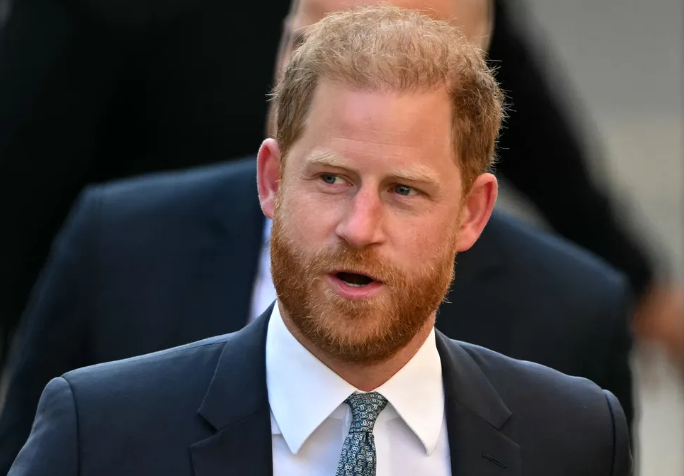Prince Harry has returned to court to challenge the U.K. government’s decision to downgrade his security, following confirmed threats to his life reportedly linked to a known terrorist organization.
Court documents reveal that Harry sought specific security measures after the terrorist group al-Qaeda allegedly published a document calling for his assassination, claiming it would “please the Muslim community.” These threats have become a central point in Harry’s ongoing legal battle to regain automatic police protection for his visits to Britain.

Prince Harry arrives at the Royal Courts of Justice in London on April 8, 2025 | Source: Getty Images
Since stepping down as a working royal in 2020 and relocating abroad with his wife, Meghan, Harry has argued that the current case-by-case security assessment system leaves him and his family vulnerable. His legal team stated that this arrangement places their safety at unacceptable risk. The matter was addressed during a two-day hearing in April 2025 at the Court of Appeal in London, where Harry appeared in person at the Royal Courts of Justice.
Shaheed Fatima KC, representing Harry, told the judges, “There is a person sitting behind me whose safety, security, and life are at stake.” She emphasized that Harry’s presence underscored the seriousness of the matter. Due to the sensitivity of the information discussed, part of the session was held privately.
Following the closed session, judges authorized a written summary revealing Harry’s argument that the Royal and VIP Executive Committee (RAVEC)—responsible for security decisions—failed to follow its standard procedures when his protection was downgraded. Instead, a “bespoke” process was applied, differing from the standard risk assessments used for others in similar situations.
Before leaving royal duties, Harry underwent a 2019 risk assessment that recommended maintaining his existing police protection. However, after his move abroad, RAVEC shifted to requiring 30 days’ notice for each visit and evaluating protection needs individually. Harry criticized this system as “inadequate, inappropriate, and ineffective.”
Representing the Home Office, Sir James Eadie KC argued that Harry’s unique circumstances required a flexible approach. While acknowledging that Harry “disagrees vehemently” with the outcome, he maintained that this did not justify overturning the decision, which had been carefully reviewed and unanimously supported. He noted that specific threats, including the al-Qaeda threat, were considered under the new process. Sir James also defended RAVEC’s handling, highlighting the involvement of Sir Richard Mottram, a former chair of the Joint Intelligence Committee.
Throughout the hearing, Harry appeared fully engaged, occasionally taking notes. He was seen visibly reacting—throwing down his pen—after hearing that standard risk assessments were not applied to his case.

The Duke of Sussex is seen exiting the Royal Courts of Justice on April 8, 2025, in London, England | Source: Getty Images
Outside the court, an onlooker blamed the media for Harry’s departure from the U.K., prompting court staff to intervene and remove the individual.
Previously, Harry told The Telegraph that he believes his security downgrade was part of an effort to pressure him and Meghan to remain within the Royal Family. He has insisted that his former Metropolitan Police protection cannot be replaced by private security firms.
This case follows Harry’s earlier legal defeat in February 2024, when the High Court ruled that RAVEC’s decision was lawful and fair. However, in June 2024, the Court of Appeal allowed Harry to challenge that ruling, citing a “real prospect of success” based on claims that proper procedures were not followed.
Harry’s legal team had urged the court to fast-track the case due to safety concerns, including the terror threat, but the request was denied. A final judgment is expected after Easter, once the judges review all arguments.
Prince Harry’s Courtroom Demeanor: Confidence or Hidden Anxiety?
Prince Harry’s confident appearance outside the court has also drawn public attention. On Tuesday, April 8, 2025, Harry was seen arriving briskly at the courthouse with a small security team, using a private entrance after briefly waving to cameras.
Body language expert Judi James analyzed Harry’s demeanor for Express, describing his gait as “brisk” and “swaggering,” suggesting a “cocky” attitude. She noted that his chest was puffed out and he offered brusque waves, portraying himself as heroic and popular.
However, James detected subtle signs of inner tension. “There is one cue that suggests he might not be feeling quite as brave as he appears—the frequent touch on his tie or stomach, creating a self-protective barrier,” she explained. She compared this gesture to a common nervous habit seen in King Charles.
Despite reporters calling out questions—including whether he would meet his father, King Charles—Harry did not respond.
Inside the courtroom, Harry’s legal team argued that he had been “singled out” for different treatment compared to others, criticizing RAVEC for failing to consult independent security experts before downgrading his taxpayer-funded protection.
While the government’s lawyers defended the decision-making process, arguing that Harry’s claims rely on “small parts of the evidence” and “fail to see the wood for the trees,” the Duke’s team continues to press their case.
As the proceedings unfold, Prince Harry’s determination to secure consistent police protection for himself and his family remains clear, though the final decision is still pending.



